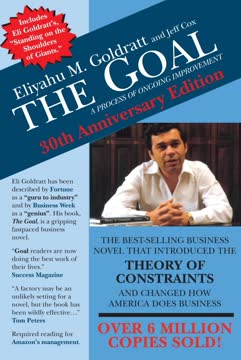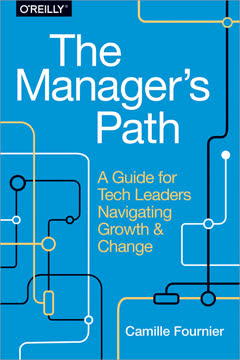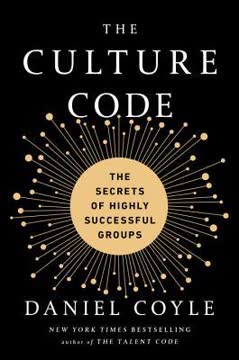Key Takeaways
1. Servant Leadership: Placing Others' Needs First
"Leadership is not about controlling people; it's about caring for people and being a useful resource for people."
Redefining leadership. Servant leadership challenges traditional notions of power and control. Instead of focusing on personal gain or status, servant leaders prioritize the growth and well-being of their team members. This approach creates a more engaged, motivated, and productive workforce.
Key characteristics:
- Empathy and understanding
- Active listening
- Commitment to personal growth of employees
- Fostering a sense of community
Long-term benefits. By investing in their team's development, servant leaders create a positive work environment that leads to increased loyalty, creativity, and overall organizational success. This approach may require more time and effort initially, but it yields sustainable results and a more resilient organization.
2. Authenticity and Vulnerability: The Core of Effective Leadership
"Be authentic, be vulnerable, be accepting, be present, be useful."
Embracing imperfection. Authentic leadership requires the courage to be genuine and transparent. By admitting mistakes and showing vulnerability, leaders create an environment of trust and open communication. This approach encourages team members to take risks, share ideas, and contribute more fully to the organization.
Building trust through honesty:
- Acknowledge personal limitations
- Share both successes and failures
- Encourage feedback and constructive criticism
- Demonstrate consistency between words and actions
Vulnerability is not weakness; it's a strength that fosters deeper connections and mutual respect. When leaders are authentic and vulnerable, they inspire their teams to do the same, creating a culture of continuous improvement and innovation.
3. Vision: Aligning Purpose, Mission, and Values
"An organization's 'vision' should be conceived as the confluence of three interrelated but distinct aspects: purpose, mission, and values."
Creating a cohesive framework. A clear and compelling vision serves as the foundation for organizational success. By aligning purpose (why we exist), mission (what we do), and values (how we behave), leaders provide a roadmap for decision-making and inspire commitment from team members.
Components of an effective vision:
- Purpose: The overarching reason for the organization's existence
- Mission: Specific actions taken to fulfill the purpose
- Values: Guiding principles that shape behavior and culture
When employees understand and connect with the organization's vision, they find greater meaning in their work and are more likely to go above and beyond in their roles. Leaders must consistently communicate and reinforce this vision to ensure it remains a living, breathing aspect of the organization's culture.
4. Nurturing a Community of Work
"Nothing, absolutely nothing yet invented or to be invented, will replace those mystical moments when people meeting or just hanging out wander into someone else's office with a problem or an idea and, after periods of talking and silence and talking again, discover that a new idea, a better idea, or a solution reveals itself, magically, it often seems."
Fostering collaboration. Servant leaders recognize the importance of creating a supportive work environment where individuals feel connected and valued. By nurturing a sense of community, leaders can tap into the collective wisdom and creativity of their team.
Strategies for building community:
- Encourage informal interactions and idea-sharing
- Create opportunities for cross-functional collaboration
- Celebrate team successes and milestones
- Promote a culture of mutual respect and support
A strong community of work not only enhances job satisfaction and employee retention but also drives innovation and problem-solving. When team members feel comfortable sharing ideas and taking risks, the organization benefits from a diverse range of perspectives and approaches.
5. Balancing Organizational and Personal Needs
"Burnout is not a crisis of time, it is a crisis of the spirit."
Promoting work-life balance. Servant leaders understand that long-term success depends on the well-being of their team members. By encouraging a healthy balance between work and personal life, leaders can prevent burnout and maintain high levels of engagement and productivity.
Strategies for supporting work-life balance:
- Offer flexible work arrangements
- Encourage time off and vacations
- Lead by example in prioritizing personal time
- Provide resources for stress management and self-care
Recognizing that employees have lives outside of work not only improves their job satisfaction but also enhances their overall performance. By addressing the whole person, servant leaders create a more resilient and committed workforce.
6. Conflict Resolution: A Crucial Leadership Skill
"Always remain mindful of the truth that most conflict in the workplace is about personality and style and not about product or process."
Addressing the root cause. Effective conflict resolution is essential for maintaining a healthy work environment. Servant leaders approach conflicts with empathy and a focus on understanding underlying issues rather than simply addressing surface-level symptoms.
Steps for resolving conflicts:
- Encourage open communication
- Listen actively to all parties involved
- Identify common ground and shared goals
- Facilitate collaborative problem-solving
- Follow up to ensure resolution and prevent recurrence
By addressing conflicts promptly and constructively, leaders can turn potentially divisive situations into opportunities for growth and improved teamwork. This approach reinforces the values of respect and collaboration central to servant leadership.
7. Adapting Servant Leadership to Challenging Times
"There is no crisis that justifies the suspension of your servant leadership values and practices, one of which is open and honest communication in an environment of trust."
Maintaining principles under pressure. Economic downturns and organizational crises can test a leader's commitment to servant leadership principles. However, these challenging times are when servant leadership is most crucial for maintaining team morale and organizational resilience.
Strategies for leading through crisis:
- Communicate transparently about challenges and potential impacts
- Involve team members in problem-solving and decision-making
- Redefine success based on current realities
- Demonstrate empathy and support for team members' concerns
By staying true to servant leadership values during difficult times, leaders build trust and loyalty that will serve the organization well beyond the immediate crisis. This approach also helps teams develop the resilience and adaptability needed to navigate future challenges.
Last updated:
FAQ
What's "The Servant Leader" by James A. Autry about?
- Core Concept: "The Servant Leader" focuses on the concept of servant leadership, which emphasizes serving others as the primary goal of leadership.
- Leadership Approach: It provides guidance on building a creative team, developing great morale, and improving bottom-line performance through servant leadership principles.
- Practical Advice: The book offers practical suggestions and real-world examples to help managers transform into true leaders who serve their teams.
- Holistic View: It integrates personal, spiritual, and material aspects of leadership to create a balanced and effective leadership style.
Why should I read "The Servant Leader"?
- Modern Leadership Needs: The book addresses the need for a leadership style that thrives in the 21st century, focusing on service and community.
- Comprehensive Guide: It serves as a field guide for managers looking to transform their leadership style and improve business results.
- Endorsements: The book is praised by notable figures like Ken Blanchard and Howard Schultz, highlighting its relevance and impact.
- Personal Growth: It encourages leaders to find more meaning in their work and personal lives, aligning with their values and purpose.
What are the key takeaways of "The Servant Leader"?
- Five Ways of Being: The book outlines five key characteristics of servant leadership: be authentic, be vulnerable, be accepting, be present, and be useful.
- Vision and Values: It emphasizes the importance of having a clear vision and shared values within an organization to guide actions and decisions.
- Community Building: Servant leaders focus on building a community of work where people feel valued and motivated to contribute their best.
- Balance and Resilience: The book provides strategies for maintaining balance and resilience in the face of organizational challenges and personal issues.
What are the best quotes from "The Servant Leader" and what do they mean?
- "Servant leadership is key to surviving and thriving in the twenty-first century." This quote underscores the importance of adopting a leadership style that prioritizes service and adaptability in a rapidly changing world.
- "Leadership is not about controlling people; it’s about caring for people and being a useful resource for people." This highlights the shift from traditional authoritative leadership to a more supportive and empowering approach.
- "Loyalty begets loyalty." This emphasizes the reciprocal nature of loyalty in the workplace, where leaders must first demonstrate loyalty to their teams to earn it in return.
- "Burnout is not a crisis of time, it is a crisis of the spirit." This quote points to the deeper issues of meaning and fulfillment that underlie burnout, beyond just workload and time management.
How does James A. Autry define servant leadership in "The Servant Leader"?
- Service-Oriented: Servant leadership is defined as a leadership style that prioritizes serving others, focusing on the growth and well-being of people and communities.
- Character and Vision: It involves being authentic, vulnerable, accepting, present, and useful, with a strong foundation of character and vision.
- Empowerment: Servant leaders empower their teams by providing resources, support, and opportunities for personal and professional growth.
- Community Focus: The approach emphasizes building a community of work where collaboration, trust, and shared values are central.
What are the "Five Ways of Being" in "The Servant Leader"?
- Be Authentic: Leaders should be true to themselves and consistent in their values and actions across all situations.
- Be Vulnerable: Embracing vulnerability means being open about doubts and mistakes, fostering trust and connection with others.
- Be Accepting: Acceptance involves valuing diverse perspectives and focusing on ideas rather than personal differences.
- Be Present: Being present requires leaders to be fully engaged and attentive to the needs and concerns of their team members.
- Be Useful: Leaders should strive to be a resource and support for their teams, facilitating their success and development.
How does "The Servant Leader" address organizational challenges?
- Negative Appraisals: The book provides guidance on conducting caring confrontations to address performance issues constructively.
- Firing and Layoffs: It emphasizes handling these difficult situations with compassion, dignity, and transparency to maintain morale.
- Structural Changes: Leaders are encouraged to involve employees in decision-making processes to ensure commitment and effectiveness.
- Legal and Personal Issues: The book offers strategies for navigating legal challenges and supporting employees through personal difficulties.
What role does vision play in "The Servant Leader"?
- Three Aspects of Vision: Vision is defined as the confluence of purpose, mission, and values, guiding the organization and its people.
- Purpose: It answers the question of why the organization exists, providing a higher reason for being beyond profit.
- Mission: This aspect focuses on what the organization does to fulfill its purpose, including goals and objectives.
- Values: Values describe how people interact and work together, shaping the culture and social architecture of the organization.
How does "The Servant Leader" suggest handling conflict?
- Preventing Conflict: The book recommends techniques like affirmations and circles of silence to prevent disagreements from escalating into conflict.
- Resolving Conflict: It provides strategies for mediating conflicts, focusing on understanding different viewpoints and finding common ground.
- Managing Conflict: Leaders are encouraged to help employees develop plans to manage ongoing conflicts and maintain a productive work environment.
- Personal Conflict: The book advises leaders on managing their own conflicts by remaining calm, centered, and open to dialogue.
What is the significance of community involvement in "The Servant Leader"?
- Volunteer Work: The book highlights the benefits of encouraging employees to engage in community service, enhancing personal growth and organizational reputation.
- Balanced Life: Community involvement is seen as a way to achieve a balanced life, preventing burnout and fostering fulfillment.
- Corporate Citizenship: Organizations are encouraged to support community activities as part of their responsibility to the broader social and economic ecosystem.
- Leadership Modeling: Leaders are advised to model community involvement themselves, demonstrating the values of service and engagement.
How does "The Servant Leader" approach the concept of loyalty?
- Reciprocal Loyalty: Loyalty is seen as a behavior that must be earned and reciprocated between leaders and employees.
- Episodic Loyalty: The book acknowledges that loyalty can be episodic, with employees being loyal to the organization and its values even for a limited time.
- Loyalty in Layoffs: It emphasizes the importance of handling layoffs with transparency and support to maintain the loyalty of remaining employees.
- Loyalty Myths: The book dispels myths about loyalty, such as equating long hours with loyalty or expecting unquestioning acceptance of policies.
How does "The Servant Leader" suggest leaders prepare for crises?
- Redefine Success: Leaders are encouraged to redefine success during crises, focusing on achievable goals and maintaining morale.
- Stay Centered: The book advises leaders to remain calm, centered, and focused, providing stability and reassurance to their teams.
- Trust the People: It emphasizes the importance of trusting employees to contribute to solutions and navigate challenges effectively.
- Prepare for the Worst: Leaders are advised to have contingency plans and to prepare themselves and their teams psychologically and emotionally for potential crises.
Review Summary
The Servant Leader is highly praised for its practical advice on compassionate, ethical leadership. Readers appreciate its focus on empowering employees, building morale, and creating meaningful work environments. Many find it transformative, though some note its age shows in places. The book emphasizes authenticity, vulnerability, and putting people first. While some criticize it as basic or outdated, most reviewers recommend it as an excellent resource for current and aspiring leaders, praising its accessible style and valuable insights.
Similar Books






Download PDF
Download EPUB
.epub digital book format is ideal for reading ebooks on phones, tablets, and e-readers.




